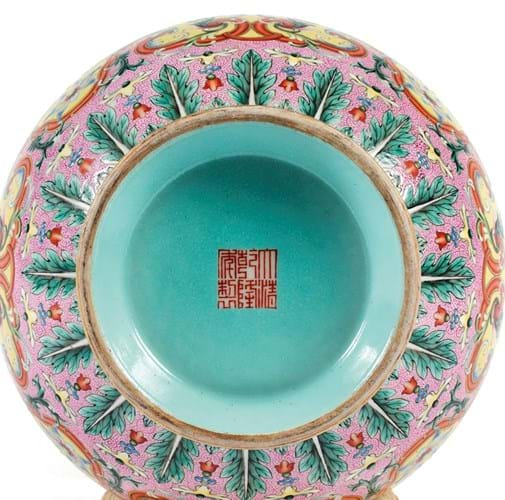It formed part of the June 16 Asian art sale at Ader, rescheduled from the spring due to the coronavirus crisis.
The 10.25in (26cm) vase, characteristic of the opulent imperial porcelains produced in Jingdezhen at the creative highpoint of the Qing dynasty, had a 19th century provenance. According to the auctioneers it was acquired by an officer (initials CG) of the 102nd Infantry Regiment and Légion d'honneur recipient during an expedition to China in the 19th century.
It came for sale from a descendant with an estimate of €600,000-800,000.
The piece has seemingly no direct companion piece, identical in shape and design, but combines many typical elements and motifs of the period. These include yangcai or ‘foreign colours’ (perfected using technology supplied by Jesuits at the court), a delicate sgraffiato engraved ground (called jinshangtianhua, an expression not unlike the English ‘gilding the lily’) and handles in the form of gold-enameled dragons.
A feature known from cloisonné enamels and damask textiles of the period are the geometric ‘paddy field’ motifs that decorate the body and the neck. Patchwork clothing was believed to ensure a healthy growth for children and was also worn by Buddhist monks, making it popular in the Ming and Qing periods.
The closest comparison the auctioneer could find was a Qianlong vase sharing the same ‘patchwork’ motifs with a ruby sgraffiato-ground sold by Sotheby's Hong Kong in 2009 for a premium-inclusive HK$8.2m (around £800,000).
A deposit of €200,000 was required to participate in the bidding at Ader that, with the auctioneer in no rush to bring down the hammer, lasted close to half an hour. The winning bid, tendered over the phone by a Chinese collector, was €2.47m including buyer’s premium.








